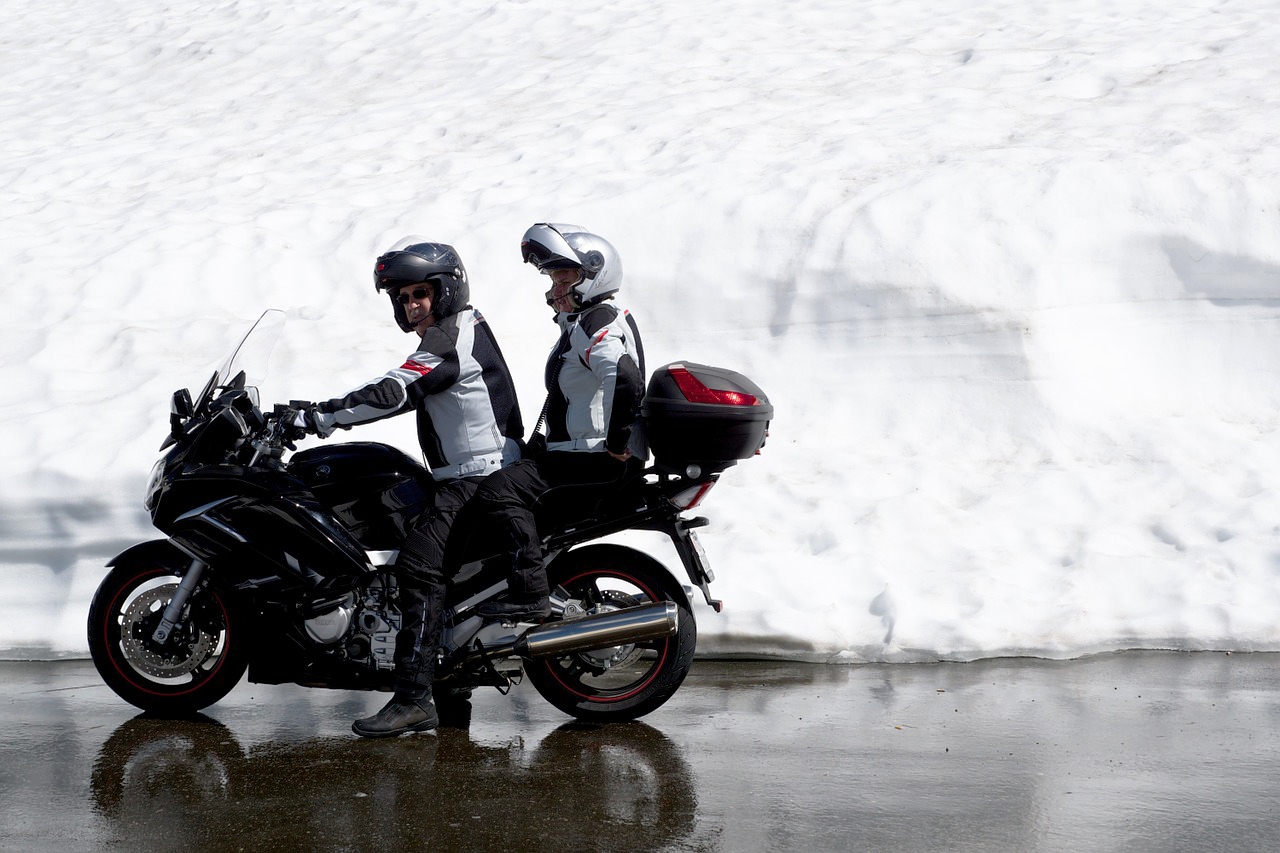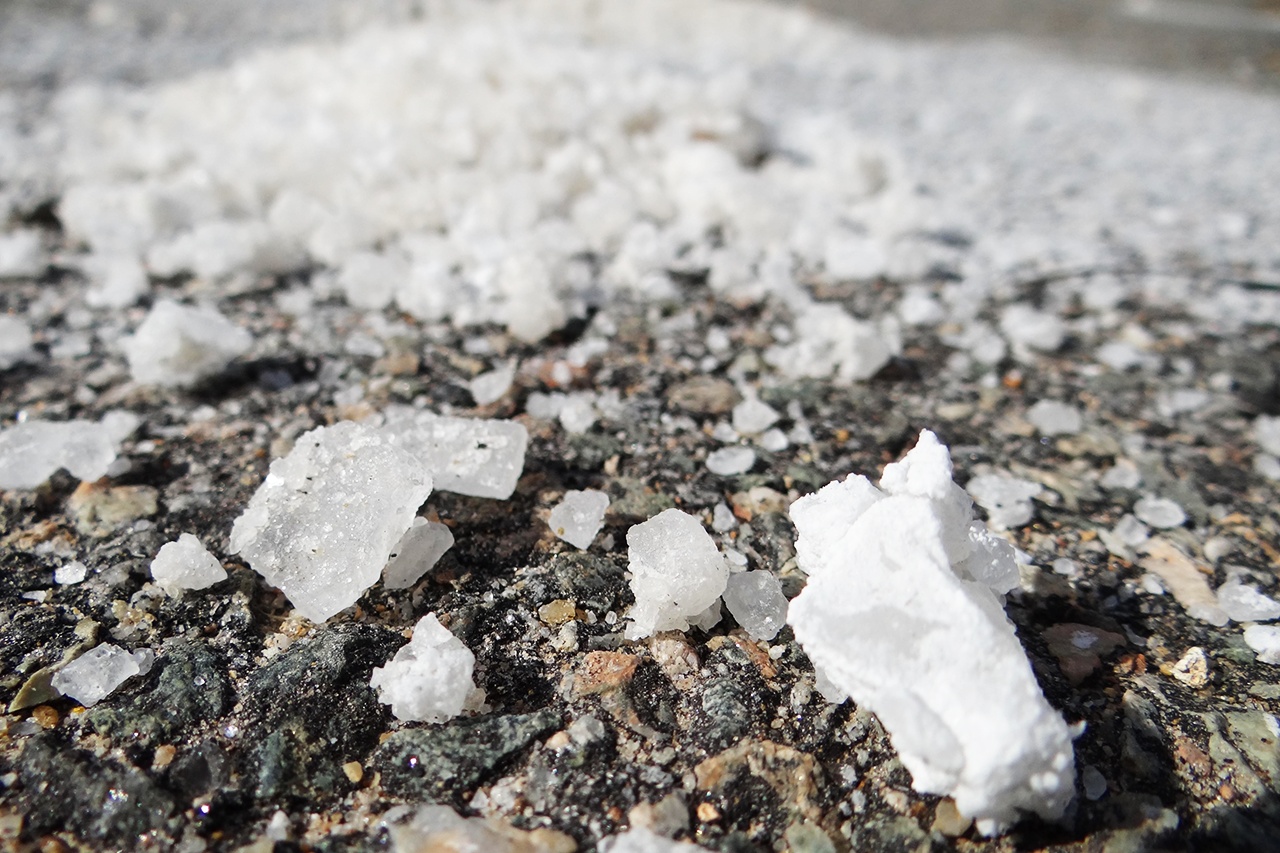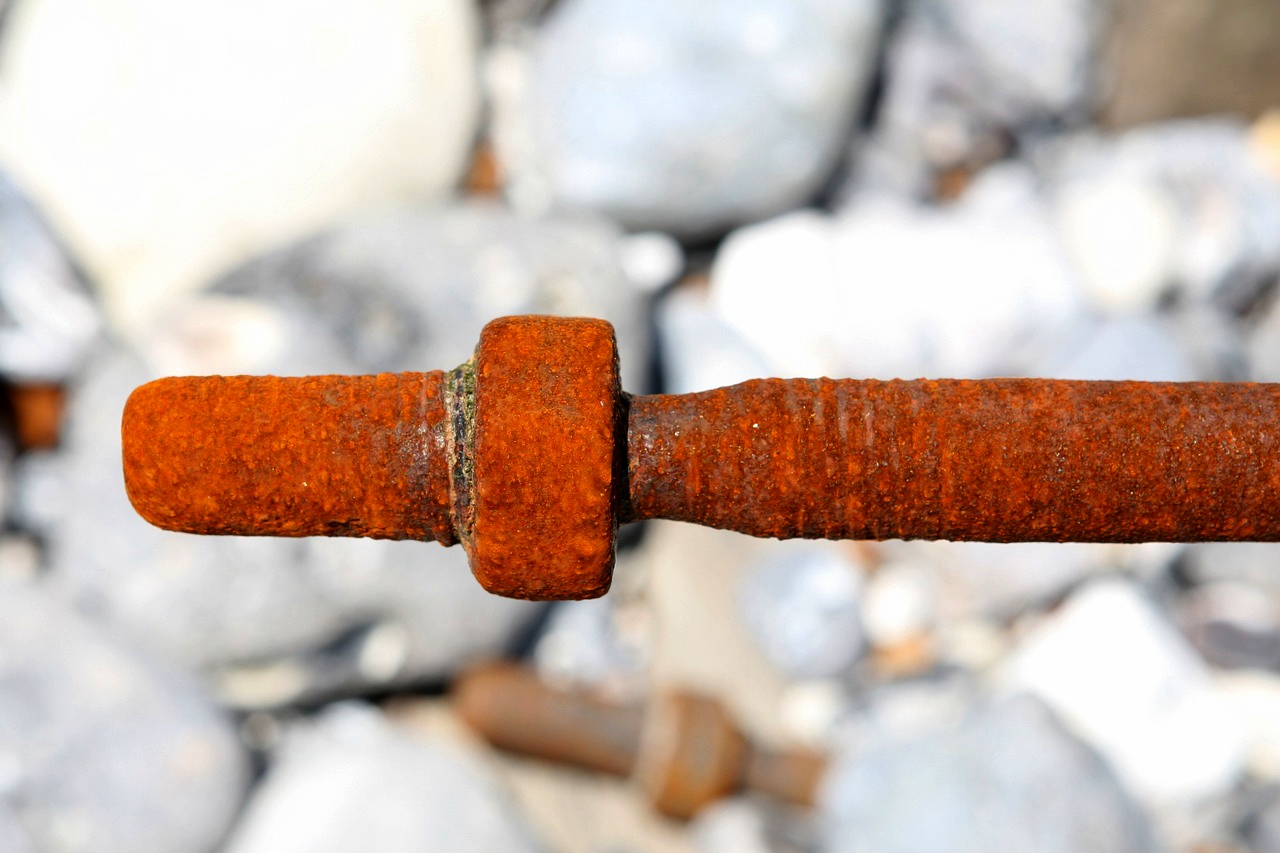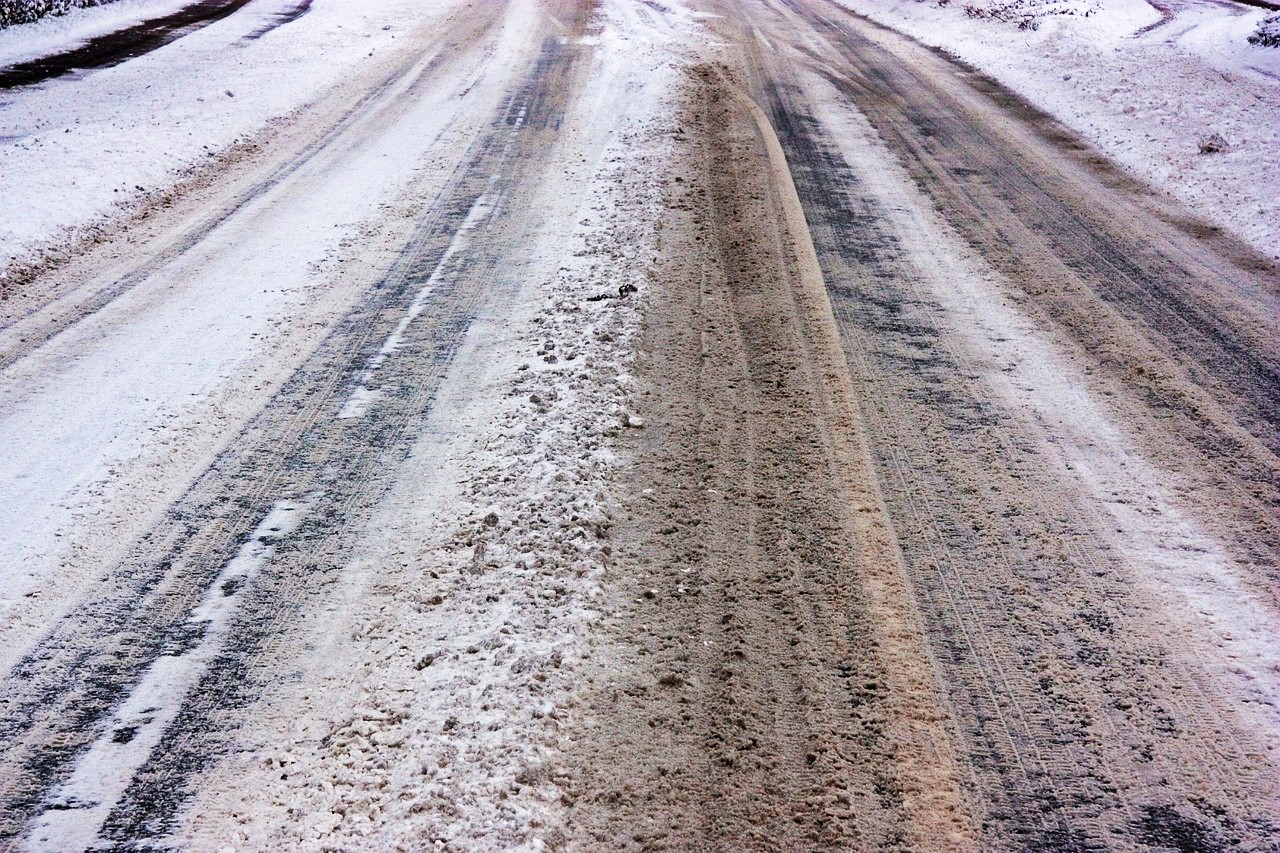For kicks, check out our FTC disclosure here. Updated Dec 3, 2025 ...
Riding Your Motorcycle On Winter Road Salt
It's winter here in Chicagoland. Said season's reputation is just as harsh as our city's industrial response to it. Crews salt the roads while most of us go about situating our motorcycles for cold storage. It's funny how (perhaps as expected) we winterize priority "favorites" first, then move to the next most important until we reach that ... wait. Maybe I'll keep that one at the ready!
“Road salt bites but riders can beat the damage and rust with smart prep and quick rinses, keeping bikes ready for winter rides.”
In our house, the sacrificial "meh, whatever" ride is an '88 Honda Hawk GT which, as you might've guessed, I just rode before outlining this article. A brief fluke in our January temps offered up three successive days of 40, then 45 and today 50 degrees with sparse rain. Roads rinsed, carburetors newly re-jetted and an aftermarket exhaust in place, I geared up before easing through every slick/slimy corner between our house and the Fort Sheridan Starbucks.
This blessing has its curses, however. Once we as riders get even a hint of saddle time, it's all over. We want more and we won't let anything deny us.
Therein lies a problem for me personally, since I have cosmetically rebuilt this bike ... twice. First, an SUV rear-ended it while my wife was riding it. Then a buddy backed over it not a month after I had freshly revitalized it. Neither parts nor paint work for such an infamously rare bird come cheap. The short of it is that I want to ride whenever winter will allow but I also want to keep my beloved Hawk mechanically (and aesthetically) intact.
This singles out road salt, my motorcycle's most obvious midwinter enemy. Its corrosive nature comes with a complimentary adhesive behavior. The longer you leave road salt on, the nastier things get and it only worsens when a fully baked engine cools off with this savory glue embracing it.
What Road Salt Does To Your Motorcycle
The parts of your motorcycle that are most harshly affected by road salt are those located toward the front. The ones in the middle suffer equally. Oh, and then there's the stuff on the end.
Salt is mean to your entire frickin' bike.
First, it accelerates oxidation (rust) many times over. Despite winter's stereotypically dry air, salt extracts whatever moisture it can from wherever it can so if it's jacketing your bike's metallurgy, well ... you can predict the rest. Aluminum isn't Switzerland, either. While it does fight off the better known issues of iron and steel, repeat exposure to salt, water and road spray cause it to become discolored ("Well, so what?") and brittle, sometimes dangerously so ("Oh. Right.")
Then there's the matter of our precious plastics.
On my Hawk, I painted them a custom, pseudo-matched electric blue. Should I completely abandon all effort to save this beautifully reflective speckle work, it too will (say it with me) oxidize. Paint behaves similarly to metal in that colors fade and surfaces crack until the return of any vanity-driven pride requires a reach for that wallet. Compound this with sharpened, marble-size chunks of reject table seasoning deflecting off those polymers that give our motorcycles their character and we arrive at lose-lose. Salt bad!
Save Your Motorcycle From Winter Road Salt Corrosion (Step "Z")
I'm composing these bits of advice assuming that newer riders might read the above before freaking out about the newly dry, over-engineered salt lick that's parked in their garage. I'm guilty of the same, circa 2012 if I remember correctly (that poor XS400RJ Seca of mine took the brunt of my unknowing punishment). It's okay, though. We already did it so let's move on. Let's remedy the situation.
Rinse your motorcycle thoroughly, in all locations, with scrutiny. Hot water (as hot as possible but bare-hand-friendly, not boiling) is our ally in this scenario, as it dissolves caked-on grit, sometimes with gusto. If you're outside and have constant access to this bucket bath, splashing it over the bike with a large cup or handheld electric water sprayer is the way to go. Have a large towel on standby so that you can wipe away any excess afterward. Don't forget the undercarriage!
Also, don't "blast" water at anything and "think like tires" in terms of where hidden road spray may have found its mark. Hard to reach areas are just as suspect. For that, we look to the soft-bristled grunge brush. Soak/spray, scrub, rinse and repeat as needed. There's also plenty of opportunity to watch for both maintenance and wish list upgrades ;-)
You may have noticed, with the aforementioned bucket "O" hotness, that I didn't mention soap. Okay, yes ... you could up the process to warp factor "suds" and hot-rinse after the fact but I personally prefer the post-rinse, chem-bath quickie. Spray cleaner/degreaser for non-painted metals (mind the gaskets), WD-40 for painted metals and plastic cleaner for ... duh.
Step "A" = Ready Your Ride For Winter's Road Salt Wrath
Now entering "shoulda, woulda, coulda" territory, our big sell is Lear Chem's incredible, amazing and fantastic ACF-50. Available in various applications and sizes, this deterrent is (mostly) non-toxic. It halts any corrosion already in progress while it prevents new hate from starting.
Expanding slightly as it cures, ACF-50 creeps into the very same hard-to-reach nooks and crannies that prove difficult to rinse, making it less likely that we'll have to. The product is safe for use anywhere but the brakes and human contact points (pegs/seat/grips), meaning each of our metals, rubbers and plastics can receive a coat without worry. I'm considering just filling our neighbor's inflatable pool with the stuff before bagging my brakes and going for a little "winter dip."
Road salt protection starts here: a good coating before the season, quick rinses after any salty ride and a fresh application midwinter keep the worst of the corrosion at bay.
It's not flammable, either so the motor would appear to be fair game ...
Adding extra shell materials to your bike, meaning less-important, semi-disposable parts, is a worthwhile option as well. Hand guards, mesh screens and fork boots are all examples of quick-attach features that make cleaning and treatment less of a chore. Seek out weak spots, hidden or otherwise and consider what simple, problem-solving installs apply.
Second Step Last (Smacks Forehead)
Mind the forecast, folks. I knew it was going to warm up and thought "but salt" before remembering "rain maker salty bye". Because the warmest of the three opportunities was after two days of consistent rainwash, I knew I had little, if anything, to worry about. After the sun went down, the temperature took a nose dive and out came the trucks, plows raised, only to dump a new layer of road salt onto what had become a glistening speed skater's paradise. Keep track of approaching warm/cold fronts and gauge whether the riding conditions are even manageable, rain or shine.
Street service schedules influence this as well, as crews most certainly address routes with heavy traffic first. Maybe that rougher tarmac at the corner of "Industry and Warehouse" doesn't get as much attention. For you dedicated dirt riders, well, you probably haven't made it this deep into my article as you're too busy shredding some remote path (or neighboring lawn).
One final Hail Mary ingredient is to invest in an EBay or Craigslist junker. Not once in all of internet history has that goofy flea market upped their GUI game and yet ... we profit. Find yourself a poorly described but road-ready "cafe rat bobber scrambler street fighter dirt bike" that never stood a chance, sentenced to an eternity fraternizing with some riding mower in back of a leaky shed.
Thoughts On Motorcycles And The Shiny, Briny Saline
I organized the suggestions above to be disorganized by design. If the Jackson Five wrote ABC this way, our dancing would be far more awkward but the end truth is that yes ... yes it's okay to ride your motorbike on road salt if you prepare beforehand and respond afterward.
Still, that isn't to suggest that you should subject your newly titled Motus to the elements. We're just providing a sound off in hopes that you'll take appropriate measures should you decide the risk is worth the reward. Remember that if it's not, there are alternatives to motorcycling when the powder hits the lawn.
Having multiple bikes within reach, I find I'm often balancing weather's science against opinion's prophecy. The "want" usually reins victorious and with that, my side stand flies. Well, that is assuming I have enough coffee on hand to conquer the post-ride cleanup.

How Do You Protect Your Motorcycle When Cold Weather Riding?
There are a lot of great winterizing products out there. Which ones do you prefer? What do you like about each and why? Your input is invited. Leave a comment and/or write an article!







Comments
Rode my BMW this Tuesday. Exactly did what you explained. 4 hours ride... Then 2 hours cleaning and applying the Acf50 looks like new again. Looking at the forecast each day again.
Great to hear, Carlos!
With ACF-50 applied, your next post-ride cleanup should take significantly less time/energy.
I should start doing this as my Z125 Pro is my main mode of commute to work even when there is salt on the road. I haven’t seen any corrosion yet but I do admit that I’m new at commuting during the winter months.
Thoughts gone wild? Write an article!